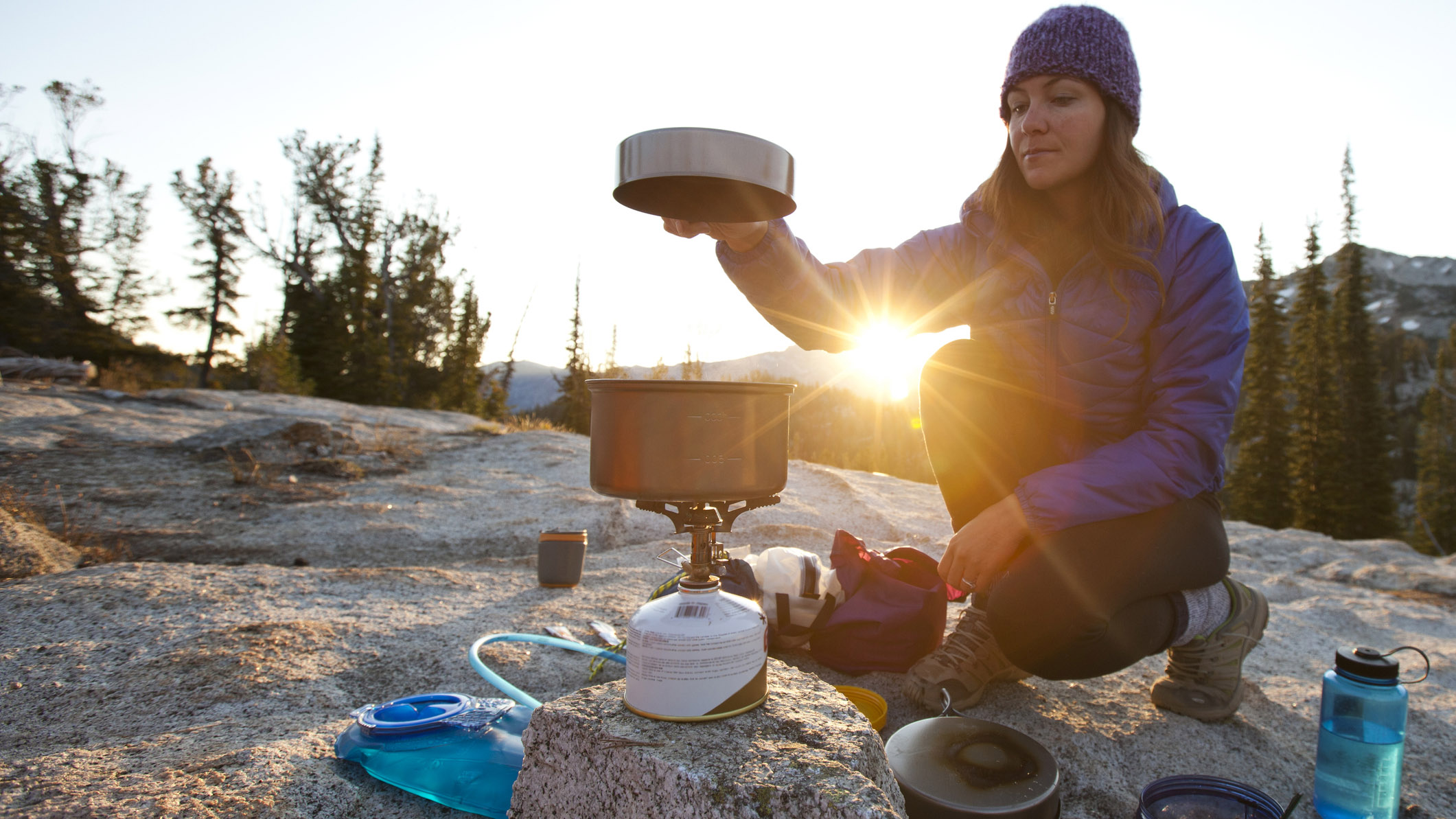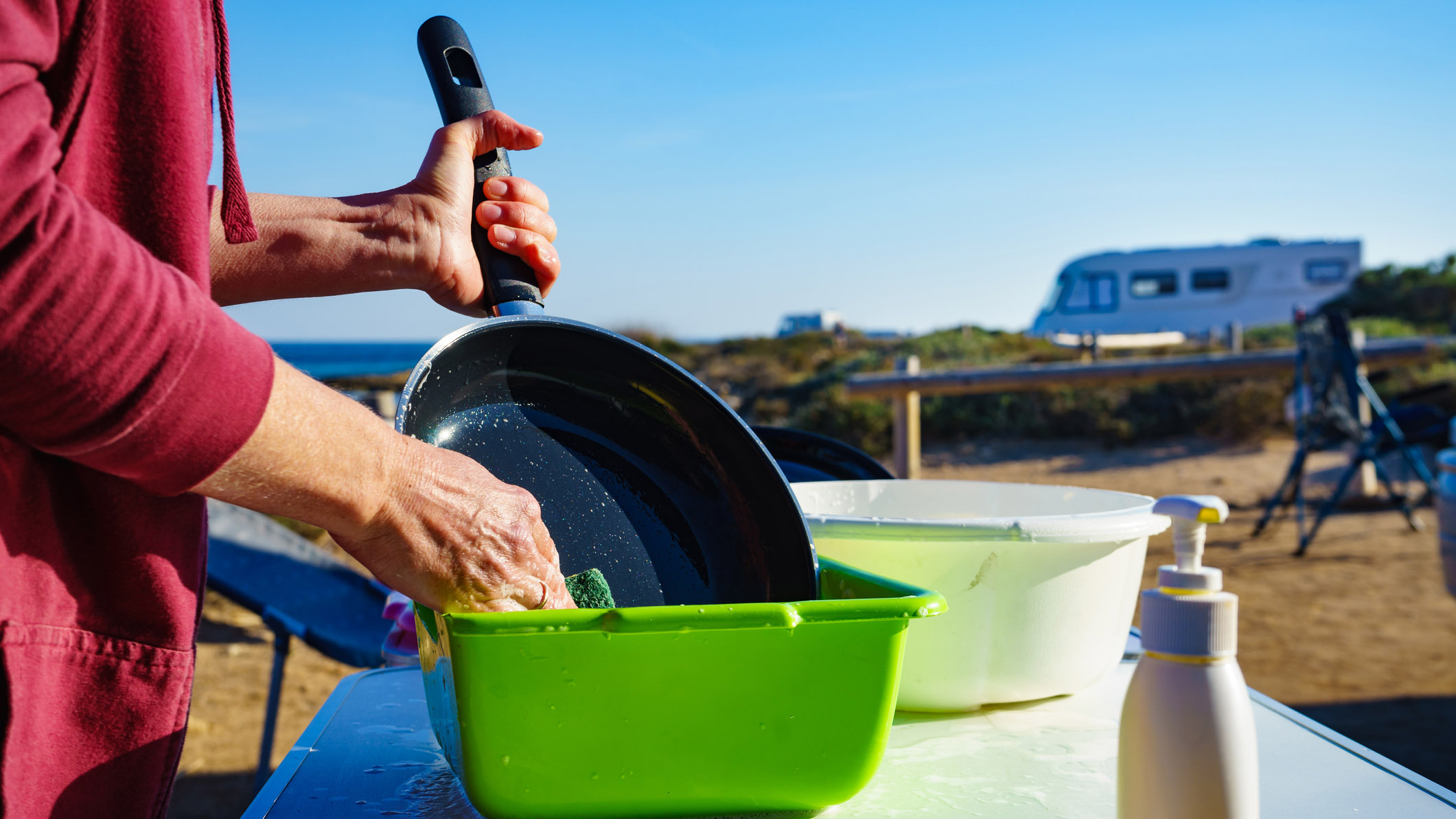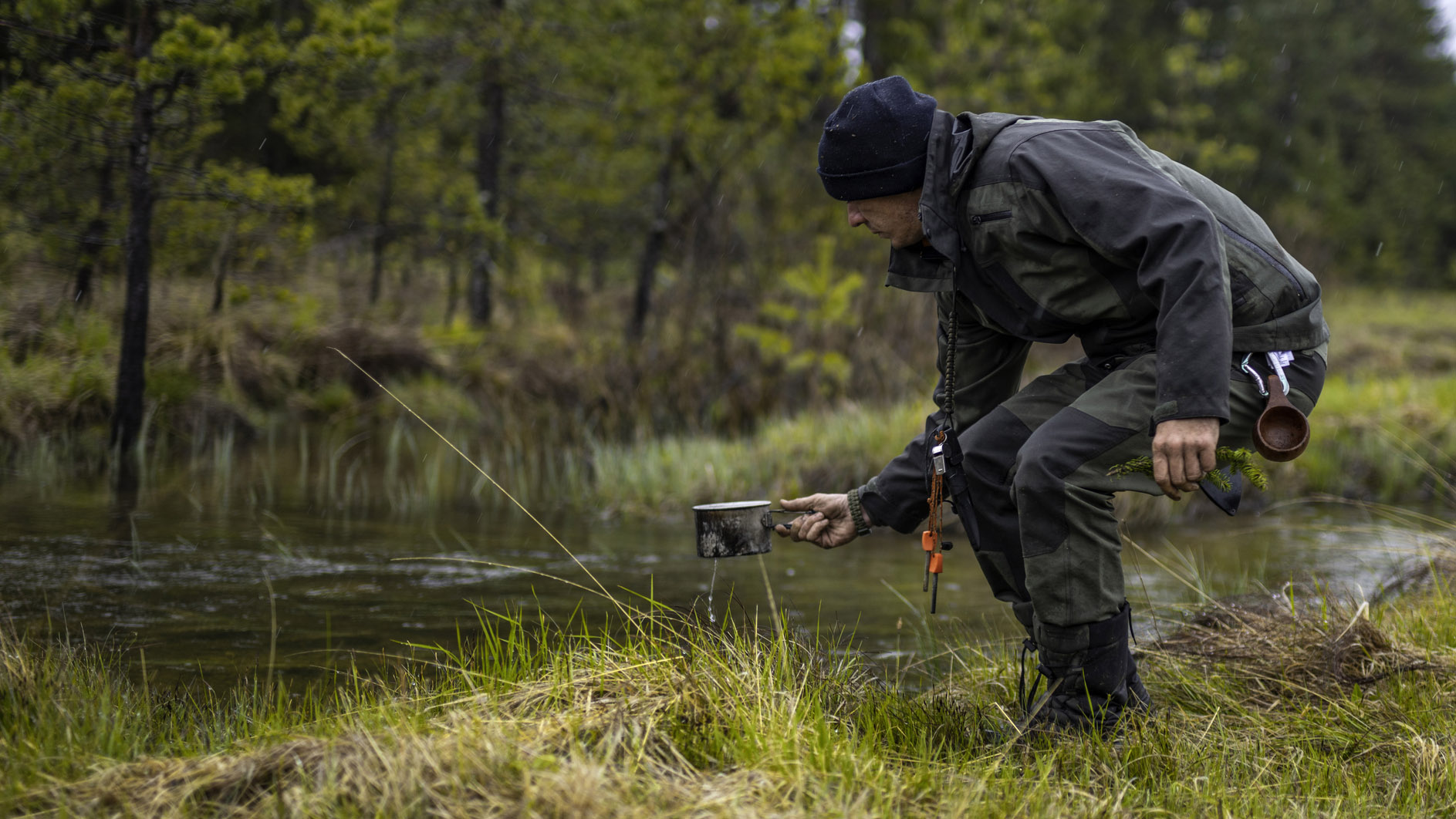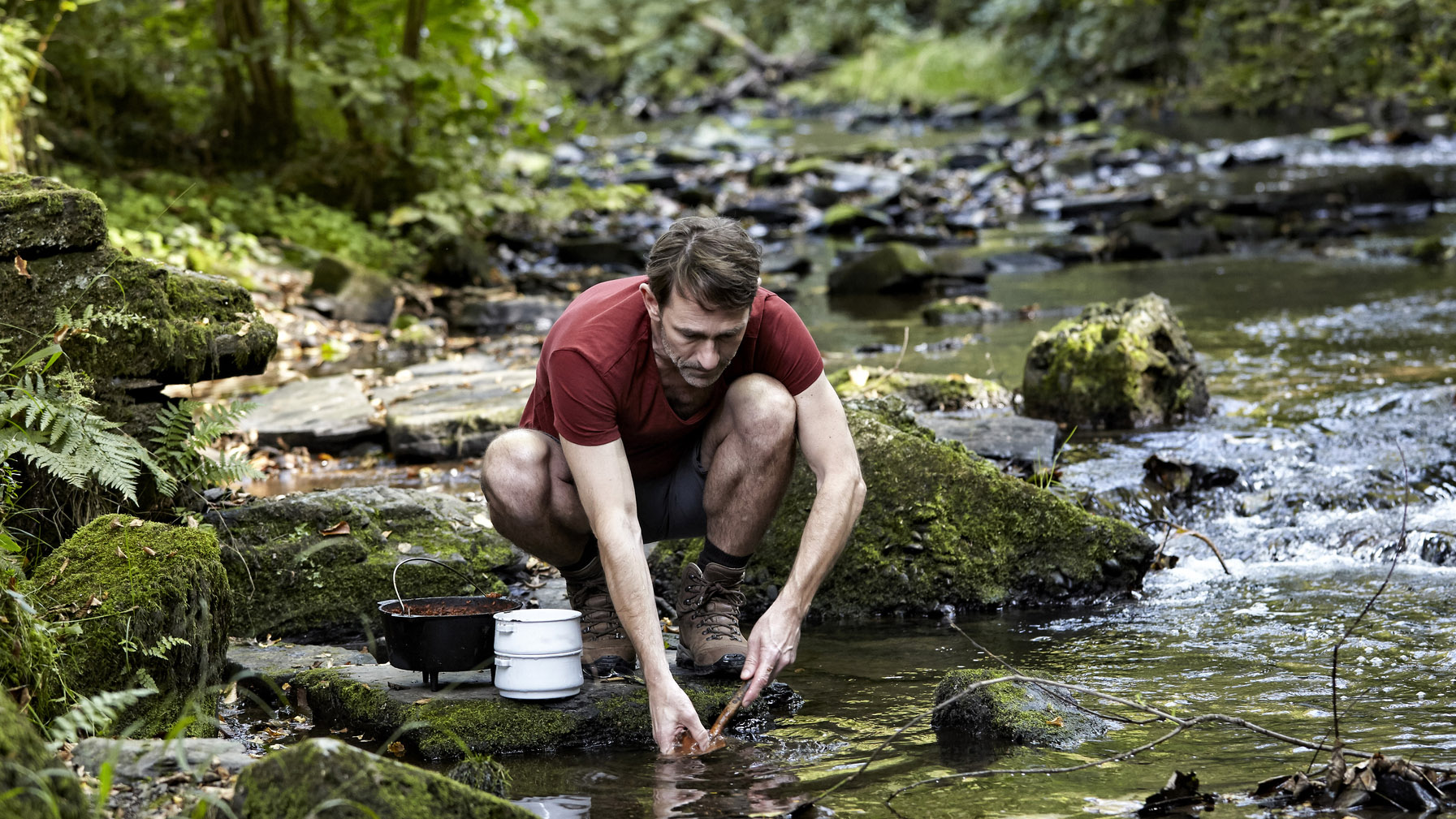How to clean camping cookware: keep your utensils pristine while being kind to the planet
How to clean camping cookware in an environmentally conscious way whether you’re car camping or heading off into the wilderness

Knowing how to clean camping cookware in a variety of scenarios is very useful. From the best practices for the campsite to getting things as close to pristine as you can in the wilderness, even when you’ve got no access to water, there are some definite dos and don’ts when it comes to getting your kit clean and protecting the environment.
If you’re car camping, you’ve got the luxury of bringing along big bottles of soap and even bleach. Even if there’s no washing facility on site, you can still replicate something like your home kitchen with a set of well selected camping buckets and a little bit of know-how.

For those of you heading into the backcountry with your tent and an integrated camping stove system, you don’t have quite as much to work with. This is where knowing how to clean camping cookware in the wild really pays off. Get things wrong and you can harm the local ecosystem, as well as potentially giving yourself a nasty gastrointestinal illness or a water-borne virus. Not ideal. Let’s get it right, shall we?
So, knowledge of how to clean camping cookware will mean you can be kind to yourself and to the environment, all while looking after your best camping utensils too. We begin with a guide to the easier task of cleaning cookware at the campsite, before detailing the considerations you should make when in the backcountry, including a guide on how to clean your camping cookware without a water source.
How to clean camping cookware at the campsite
First things first, if you have access to a sink, this is obviously where to clean your cookware and utensils. This is the most environmentally friendly place to do it and access to hot running water means you can probably get your stuff just as clean as it would be at home. Many campsites have these kinds of facilities on site.

However, it’s also useful to know how to clean camping cookware at a campsite that doesn’t have cleaning facilities. Here’s what you’ll need:
- A trash bag
- Three camping buckets
- Biodegradable soap
- Bleach
- Cloth or sponge
- Towel
- Warm water
- Sieve
1: Scrape food off your plates into the trash
If there’s any food left on your plate – heaven forfend! – at the end of your meal, scrape it off your plate and into the trash.
All the latest inspiration, tips and guides to help you plan your next Advnture!
2: Set up your three camping buckets
The best camping buckets are versatile bits of kit that make water management on a camping trip much easier. A three-bucket system is employed here: one as a wash bucket with water and biodegradable soap, one as a rinse bucket with just warm water and one as a sterilizing bucket with warm water and a single cap of bleach.
3: Wash, rinse, sterilize
One by one, wash your plates and cookware first by washing in the wash bucket, then by rinsing in the… you’ve got it, rinse bucket and then finally giving it a quick sterilize… in the sterilize bucket.
4: Dry plates and cookware with a towel
See above.
5: Filter out food scraps and dispose of water
Before you empty your buckets, you don’t want to be leaving food scraps scattered around near the campsite. This could attract foxes, raccoons or something more threatening. Instead, pour the water from each bucket into one, before draining this through a sieve to collect the food matter. Empty the food matter into the trash bag. Water that has been used for washing or cleaning purposes is known as grey water and you should dispose of it at least 200 feet from a water source. It's best to spread it over a wide area that sees plenty of sunlight to allow it to evaporate quickly.
The video below shows this process beautifully:
How to clean camping cookware in the backcountry
Knowing how to clean camping cookware in the backcountry helps you to enjoy an environmentally friendly expedition, while keeping your pots and pans clean for each meal. The crucial thing here is not to use any cleaning products in streams, rivers or lakes, as it can contaminate the water and harm the surrounding environment.

However, there are no taps in the wilderness, so you’re going to have to source your washing water from somewhere. Using a water bottle or similar, collect flowing water from a nearby stream and carry it back to your tent, which should be at least 200 feet from any water source.
Purifying your water
The thing you now need to consider is that wild water can carry all kinds of harmful bacteria and protozoa. If ingested, this can lead to sickness, vomiting and diarrhoea, or even worse, dysentery. Needless to say, we won’t be washing our dishes until we’ve done something about this.

You now need to purify your water, which can be achieved with a physical filtration system, purification tablets, UV sterilization pens or by boiling it using your camping stove. The advantage of the camping stove approach is that you then have hot water, which – as you probably know – is preferable for washing up. The downside is that this uses fuel. However, if you’re meal of choice is a boil in the bag dinner, you can kill two birds with one stone.
Get cleaning
Clean away from your camp, as you don’t want to attract all manner of critters to your basecamp with scraps of food. As keeping the weight of your backpack down is all-important when wild camping, it’s best to go for quite a minimal approach when it comes to the amount of cookware you bring. Many camping meals can be eaten straight from their packet, which reduces the need to bring, and therefore clean, plastic plates and the like. Enough water can usually be carried in your stove’s pot, as it’s not like you’re going to be cleaning the quantity of dishes you’d expect after a royal banquet.
Similarly, you don’t want to be carrying a big bottle of washing liquid, so just bring a small amount of biodegradable dish soap to use on your utensils. A sponge or cloth is recommended to remove stubborn bits of food, while wet wipes are also really useful. A little goes a long way, dab a small amount of dish soap onto your sponge and add water and get cleaning. Remember, leave no trace! Any used wipes and packaging can be stored in an old dry bag, which you can pop in your backpack and carry out.

You’re never going to get everything as clean as it would be in your home kitchen. Getting things ‘clean enough’ is fine. Any metallic objects should be dried thoroughly before being packed away, as they are prone to rust.
How to clean your camping cookware without a water source
If you’re miles from the nearest water source, do not fear! You can clean your pots and pans with… dirt! That’s right. Dry dirt is great at soaking up grease, oil and little bits of food. If you’re not too precious about a little scratch here and there, this is a viable option.
To begin, fill your pot with dirt and smear it around the sides, stirring vigorously with a spoon or knife. Do this a few times and you should notice that your pan becomes miraculously cleaner, with only a few specs of dirt left over each time you tip your unlikely cleaning product back out. If you’re on the beach, wet sand works just as well. Once the pan is mostly clean, use a clump of dry grass to give the inside a good scrub.
Hopefully you still have a little bit of water in your hiking flask and your stove to hand to heat it up. All you need is a tiny little bit of warm water to slosh around in your pan, getting all the surfaces. When you come to pour the water out, check to see how much dirt its holding, before rinsing your cutlery as you pour the water away. Repeat this process until the water you’re pouring away looks as clean as when it went in.
The video below shows this process in more detail:
Alex is a freelance adventure writer and mountain leader with an insatiable passion for the mountains. A Cumbrian born and bred, his native English Lake District has a special place in his heart, though he is at least equally happy in North Wales, the Scottish Highlands or the European Alps. Through his hiking, mountaineering, climbing and trail running adventures, Alex aims to inspire others to get outdoors. He's the former President of the London Mountaineering Club, is training to become a winter mountain leader, looking to finally finish bagging all the Wainwright fells of the Lake District and is always keen to head to the 4,000-meter peaks of the Alps. www.alexfoxfield.com

